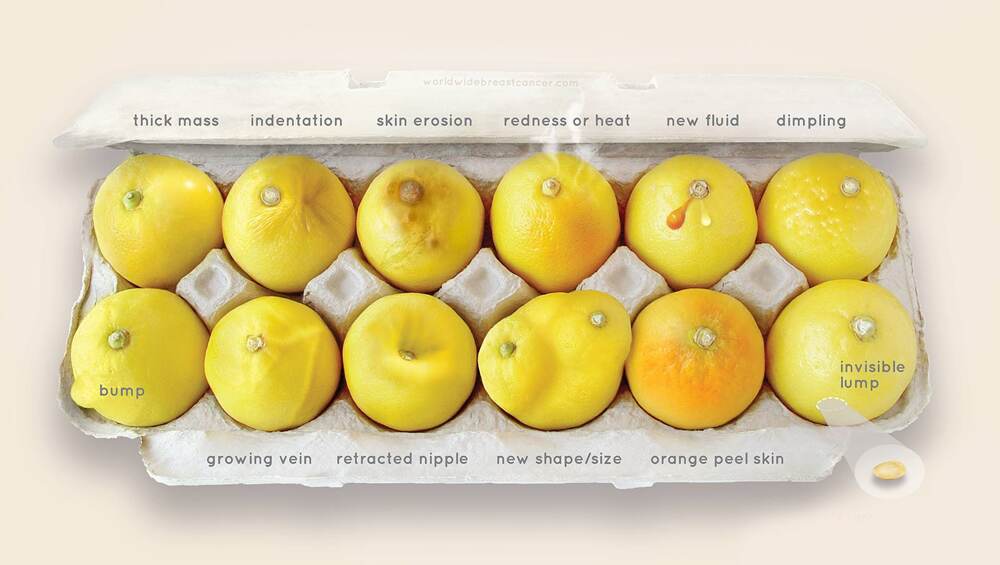Breast cancer is the most commonly diagnosed cancer among women. According to the National Breast Cancer Foundation, every two minutes, a woman is diagnosed with the disease and one woman will die of breast cancer every 13 minutes. While that’s true, the survival rates of disease are high if it is detected earlier. In recent years, breast cancer-related deaths have been decreasing. The credit in part goes to better facilities which facilitate early detection of cancers. Awareness about the disease has increased and women in the high-risk groups have been staying one step ahead of the disease through routine screening. Last year, Worldwide Breast Cancer started the Know Your Lemons campaign, aimed at helping women understand breast cancer symptoms better through pictures of lemons. Confused? Here’s how.
The picture features 12 pictures of lemons, each representing a visual symptom of breast cancer like dimpling, redness, indentation, etc. Looking at the visual, women will be able to identify the signs on their own breasts better.
Here’s the image:

Not surprisingly, the image went viral on Facebook last year and has many women recognise symptoms of breast cancer on time. One such person is Tara Simmons whose story has been put up on the site. She identified her cancer looking at the Know Your Lemons picture with the 12 signs. After noticing changes on her nipple, Tara visited her doctor. She was detected with metastatic breast cancer and had to remove her entire axillary lymph nodes.
Another woman, whose Facebook post went viral, said how a similar picture helped her identify the indentation in her breast as a sign of cancer. Here’s what she revealed in her post: “Someone once posted a picture on Facebook of what breast cancer can look like. Not feel, but look like. In December of 2015 when I saw an indentation that looked like one of those pictures, I instantly knew I had breast cancer.” She was diagnosed with cancer five days later.
Watch the video:
What Are The 12 Symptoms of Breast Cancer?
Any changes in the breast area should be a cause for concern. Women who belong to the high-risk category should be more careful. Women with a history of breast cancer in the family, the BRCA gene or an early age of menarche should conduct routine breast self-examination to detect lumps in the breast. If you see anyone these signs on either of your breasts, visit the doctor at the earliest. Are You Prone To Breast Cancer? Here Are The Risk Factors.
• Thick Mass
• Indentation
• Skin erosion
• New fluid
• Dimpling
• Growing veins
• Bump
• Retracted nipple
• New shape
• Redness or heat
• Invisible lump
• Orange peel-like skin
What To Feel For During Breast Self-Examination?
While examining your breast, you should feel up the skin, fat tissues and muscles. Moving your fingers in small circles with mild, medium and strong pressure will help you detect lumps in all the three layers. Here's how you check for lumps.
The area between both the breasts – including the sides of the breast, underside and the armpits – should be checked for lumps.
Every lump is not a sign of a cancerous lump. If the lump feels soft like a pea, it could be the milk lobe. If it feels like a soft bean, it could be a lymph node. If it is malignant, the lump may feel hard like a lemon seed.
While self-examination is the first step, any doubts about a lump in your breast can be quelled through a mammogram, an ultrasound, a biopsy or an MRI scan.
(The above story first appeared on LatestLY on Oct 11, 2018 06:32 PM IST. For more news and updates on politics, world, sports, entertainment and lifestyle, log on to our website latestly.com).













 Quickly
Quickly




















